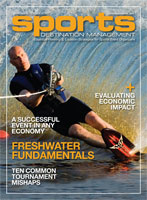Sandy Springs, GA
xxx more....

Recently, I read an interesting article talking about the demise of softball at the international level due to its removal from the Olympics. Even in the U.S., funding for these top-level athletes has dwindled as the USOC no longer has the level of resources to dedicate to this sport. I find all this news a bit ironic, as softball participation in the U.S. is at an all-time high. Events surrounding this sport generate generous revenues to the rights-holders and the locations that host them. And yet, at the highest level, we cannot find the resources to keep these athletes in the sport.
But just as the professional athlete must perform at a higher level than the amateur, so must the sport itself. Soccer in the U.S. still struggles to maintain a professional presence, despite the massive participatory levels in the junior ranks. As a general rule, athletes in the non-marquee sports have another avenue in which to pursue their dreams - the path to the Olympics. The USOC dedicates vast resources to the development of athletes in many sports, including those competing in "non-traditional" events. Unfortunately for the USA Softball athlete, the decision by the IOC to eliminate it from the games meant less resources would be dedicated to it by the USOC. Although traditional in every sense of the word, USA Softball has fallen victim to its dependence on the IOC to keep it relevant. This in turn has had a ripple effect worldwide. Recently, the World Cup was held with only three participating countries: Japan, Canada and the United States.
xxx more....